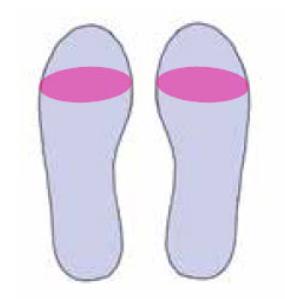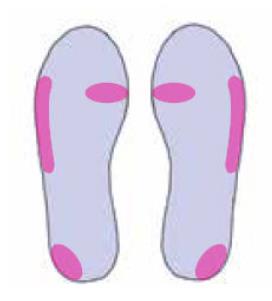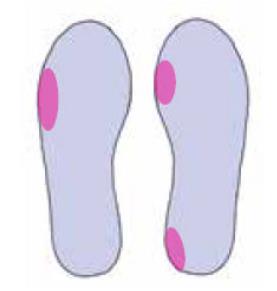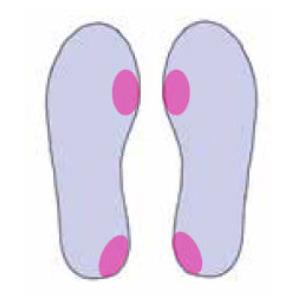In addition to directly observing the foot and leg shape, we can also find some clues from the clothes and shoes we usually wear and indirectly understand our gait performance from the phenomena of life.
Normal sole wear
It is normal for the soles to show signs of wear. The wear of the correct gait will appear on the outside of the heel and under the first and second toes of the forefoot. The average wear and tear on the two feet mean that the pressure on your feet is in the correct position during the stance phase of the walking cycle.

Wear area: forefoot sole wear
Possible cause: long-distance runner/walking on tiptoe
For running sports shoes, the forefoot wear is usually more serious. If it is a lot of running and jumping training or sports shoes worn during a marathon, it is normal for the forefoot to wear more.
This is because when running, the forefoot pushes harder and takes more time. But if it is not the sports shoes that are commonly used for running, but the shoes that are usually used for walking, there is such a phenomenon of wear and tear, the interpretation can be completely different!
If the children’s forefoot soles are more worn out, it may be caused by a gait that is “accustomed to tiptoeing”. Some children who walk on tiptoe have only a slight angle, which is not easy for parents to find, but it will be clear if you look at the wear and tear of the shoes. When a child’s soles are always worn on the forefoot, it is likely to be caused by tiptoe gait habits.

Wear area: Excessive wear on the outside
Possible cause: high arch
The abrasion of the outer sole is more obvious, which usually corresponds to the “high arch” problem. The most serious abrasion is the position next to the little toe and below the second toe.
The location of excessive wear on the soles is reflected on the feet, and the soles of the feet are particularly thick and even “closed”.

Wear area: asymmetrical wear on the left and right sides
Possible cause: skewed body
No matter how the shoes are worn, at least two sides should be symmetrical. If the left and right sides are asymmetrical, for example, grinding the inner side while grinding the outer side, while grinding more while grinding less, it means “the body is skewed”.
It may be dangling while walking, or the pelvis is tilted, the length of the feet, and the center of gravity is unbalanced, which will cause the phenomenon of different wear on both sides.

Wear area: the toe is easy to wear
Possible cause: too big shoes/foot drop problem
The wear of the toe reveals two things: it may be “shoes are too big”, or it is usually “to walk with the foot”. The toe of the shoe usually does not touch the ground. If children often wear the toe of the shoe, it means that the shoes do not fit.
People who like to walk with their feet may have a large area of average wear and tear on the soles; the pits on the toes of the shoes are caused by the insufficient height of the legs when walking.

Wear area: excessive wear on the inside
Possible cause: flat feet/ hallux valgus
Usually there is not too much pressure on the inside of the plantar. Unless the arch of the foot is low, that is, for people with flat feet, the force on the inside of the plantar will increase, causing the inside of the heel and the side of the big toe to be particularly worn.
When you find that your shoes are particularly prone to wear near and below the big toe, or the upper is stretched, you must pay special attention to the problems of “flat feet” and “bunions”.
